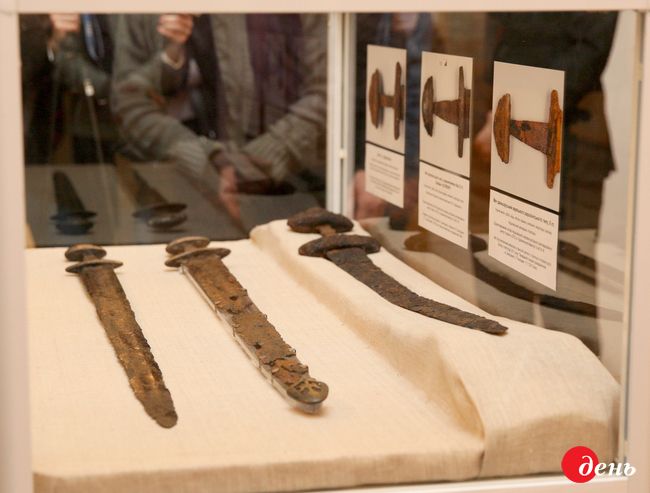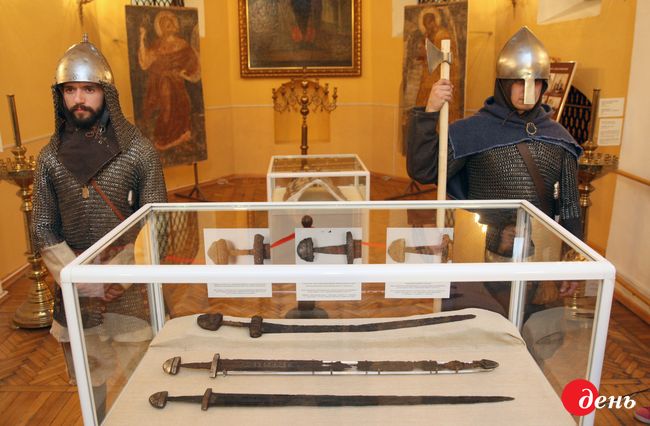In fact, it was the first time in the history of independent Ukraine that such a group of criminals was neutralized and a channel for illegal export of Ukraine’s cultural property to Western Europe was cut off. Exposing of this group also means that we can finally begin the restoration of the famous Viking sword, which the smugglers had tried to contraband to the European Union past year. During the ceremony of awarding the SBU officers from Rivne oblast, the 10th-century sword, made of ferrous and nonferrous metals, was shown to public one last time before being taken for restoration at the National Research and Restoration Center of Ukraine.
The story of this antique artifact began March 1, 2016, when the Estonian customs officers found a sword of the Viking Age in one of the trucks at the border with Russia. The find was confiscated because the driver – a citizen of Belarus – did not have a permit to transport the artifact. The examination found that the sword was about a thousand years old. It is noteworthy that the claim to the Viking sword was put forward by Russia and Estonia had planned to give it to this country. But Ukrainian experts – primarily archeologist Maksym Levada – sounded the alarm, stating that the rarity comes from Ukraine. In the end, Ukraine has managed to prove that the sword was found illegally in 2015 in the west of the country and then smuggled to Russia.

The symbols of historic victories. Minister of Culture Yevhen Nyshchuk (second from left) and the honored SBU operatives (on his right) examine rare swords. In addition to the Viking sword (pictured far right), the National Kyiv Pechersk Historical and Cultural Preserve displayed some restored 10th-11th-century swords. The one in the middle is a 10th-century Carolingian-type sword kept at the Chernihiv Oblast Vasyl Tarnovsky Historical Museum. The third rarity, a Carolingian-type Ancient Rus’ sword, dates back to the 10th century and is kept at the Khortytsia National Preserve / Photo by Artem SLIPACHUK, The Day
When the sword returned to Ukraine, the SBU opened a criminal investigation into smuggling of cultural property. On January 30, 2017, the SBU officers in Rivne oblast detained a group of five citizens of Ukraine and two citizens of Belarus who were directly involved in smuggling of the Viking sword. During the search of the perpetrators’ belongings, more than 1,000 archaeological items were seized, among them coins and rings, which are currently undergoing examination.
As the distinguished SBU officers say themselves, the case had been kept secret for almost a year. Security officers managed to document the fact of smuggling of the Viking sword, although this specified type of crime is not one that is documented. The person who directly committed the smuggling fully admitted his guilt and has already received his sentence.

“This was a thriller that ended very well for us,” said Culture Minister Yevhen Nyshchuk. “The sword is a symbol of power and victory. And if it falls to the enemy’s hands, that means defeat. In opposition to the Kremlin aggression, returning such symbols is greatly important because it also returns us to the historical truth.”
More on the situation around theft of archaeological artifacts will be published soon on the pages of The Day.







